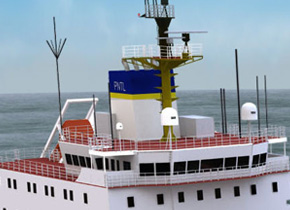Key Features
The vessels our people sail are purpose built and use designs that combine decades of experience to create three of the most advanced cargo vessels in operation. These include many important safety features, click on the labels below to learn more.
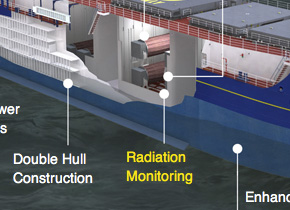
Weather Routing
Each PNTL ship is equipped with a satellite weather routing system and also uses professional shore-based maritime services that provide up to the minute local meteorological data. These systems enable the ships to follow the safest routes and avoid severe weather patterns.
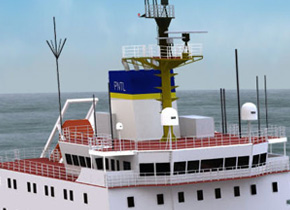
Dual Navigation Monitoring and Cooling Systems
PNTL ships can maintain their key operating systems even in extreme circumstances because all essential cabling is duplicated on both sides of the vessels. For example, if cabling were damaged by an accident on the port side, a PNTL ship would be able to navigate, communicate its status, monitor its cargo and operate hold cooling systems by using identical cabling located along its starboard side.
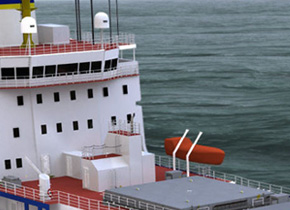
Secured cargo
The special 100-tonne casks containing the nuclear material on PNTL ships are bolted to the ship's structure within each hold. This means that they remain fixed at all times while the ship is at sea.
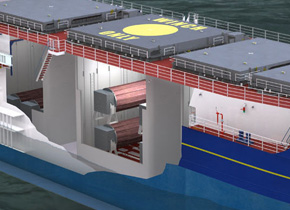
Radiation safety
The average crew radiation dose on a PNTL ship is extremely small - just 0.08 millisieverts per year (mSv/yr). Natural background radiation varies significantly from place to place. The world average dose received by individuals is 2.0 mSv/yr. Type of occupation can also influence radiation doses. Typical figures for occupations are 1.0 mSv/yr for a nuclear worker and 2.0 mSv/yr for a commercial airline pilot. Ship crews receive lower natural radiation doses while at sea than people living on land because they are not exposed to ground-borne radiation and are exposed to less cosmic radiation at sea level.

Additional firefighting equipment
Each PNTL ship has a multi-zone and multi-sensor fire detection system linked to alarms on the bridge. Each vessel also is equipped with a graduated series of firefighting measures. Crew members are trained to handle shipboard fires professionally and practice their firefighting skills in regular exercises. Ultimately, each of the holds could be filled with seawater to put out a fire or provide a shield against radiation. Even with each hold flooded, a PNTL ship would be able to remain afloat and navigate safely. This ultimate safety system is shown in the animation.
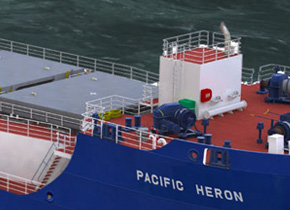
Back-up electrical generating capacity
The PNTL ships are fitted with extra electrical generators in the bow and stern to ensure that power is available to operate essential systems, such as firefighting equipment, even in extreme circumstances.
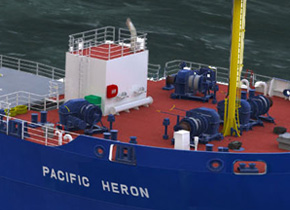
Bow thruster
The bow thruster - a single propeller in a duct which runs through the bow - provide optimum manoeuvrability in ports.
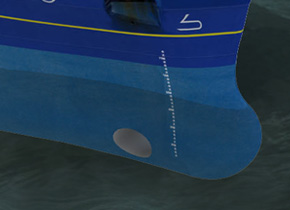
Enhanced buoyancy
Enhanced buoyancy is provided by extensive compartmentalization within the hull, cargo areas and throughout each PNTL ship. This ensures that PNTL ships can float even in extreme circumstances.
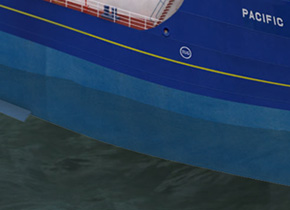
Radiation monitoring
The casks on PNTL ships are monitored manually by qualified crewmembers. In addition, fixed radiation monitors in each hold are linked to an alarm system on the bridge.

Double Hull Construction
The cargo compartments of the PNTL fleet are protected by a double hull configuration, extending to twenty per cent of the beam on both sides of each ship. In addition, the hulls are reinforced with 400 tonnes of extra steel to withstand collision damage.
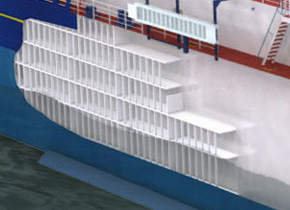
Back-up electrical generating capacity
The PNTL ships are fitted with extra electrical generators in the bow and stern to ensure that power is available to operate essential systems, such as firefighting equipment, even in extreme circumstances.
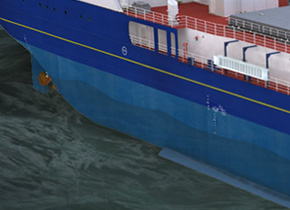
Twin engines, rudders and propellers
By having two engines, rudders and propellers, each capable of operatingly independently, the ships are able to operate safely even if one of these essential power and manoeuvring systems fails.
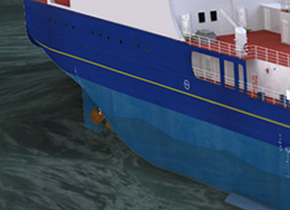
Satellite navigation and tracking
PNTL ships are equipped with modern satellite navigation systems that pinpoint their location on equipment on the bridge. It also remains a PNTL company requirement for all deck officers to navigate by using the sextant - the traditional maritime navigational aid that does not rely on other equipment on board. The position of each ship is automatically reported to a land-based control centre that is manned 24 hours a day.
